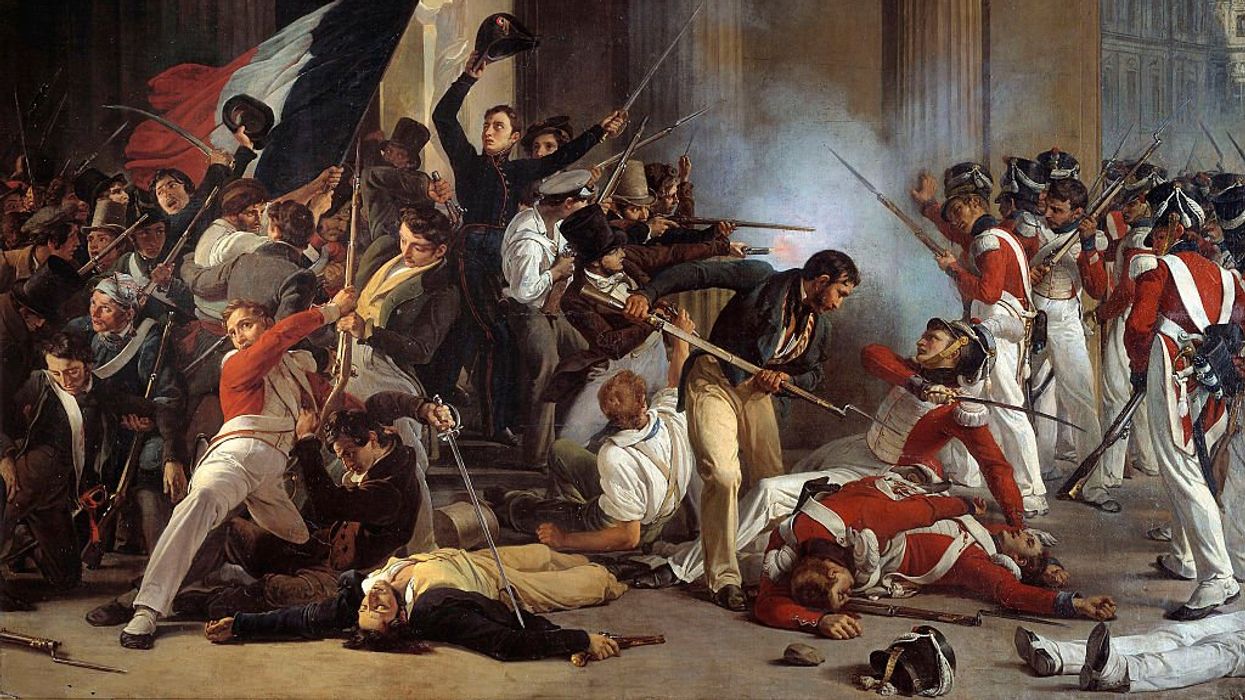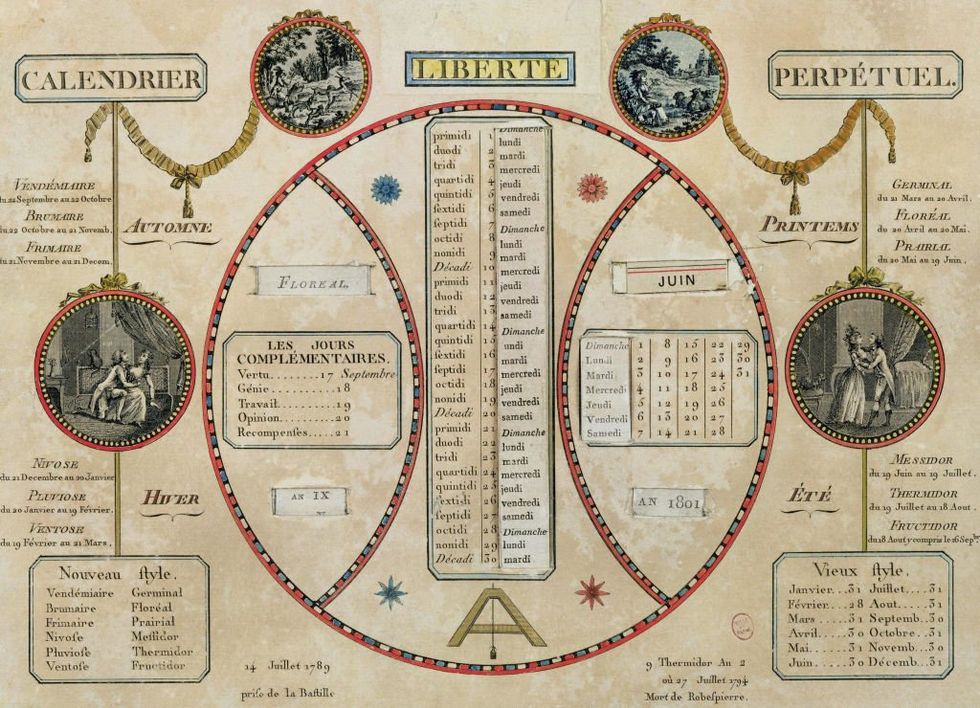
Josse/Leemage/Getty Images

Society was to spin not around religion but politics.
After the French revolutionaries beheaded their king, they had a bright idea: Let's make the day 10 hours long! This is not a joke: Left-wing "experts" actually changed the length of minutes, hours, and weeks in the name of science.
This is the story of that disaster.
The designers answered 'solely to the principles of Reason and Science.'
The French revolutionaries adopted a new calendar for three reasons:
In their zeal, they forgot an important factor: human nature.
This is a story of political arrogance. The revolutionaries overestimated science's power and underestimated religion's stickiness. In their new utopia, one hour equaled 100 minutes, and one minute equaled 100 seconds. The new year shifted from January 1 to September 22. A radical attempt to redefine time itself.
Rutgers sociologist Eviatar Zerubavel notes that the 10-day week was meant to disrupt the “traditional, sacred seven-day cycle.” The purpose was to disorient people and make them lose track of “Sunday.”
That is, the day for going to church and having a weekly sitdown with the divine. The French Revolutionary calendar was designed by the top experts of the day. The chief designer was C.G. Romme, a physics professor, and mathematicians and astronomers chipped in. In the minds of these experts, tradition/old habits didn’t matter. The designers answered “solely to the principles of Reason and Science.”
“The Revolutionary Calendar was introduced in an age which advocated the total obliteration of the old order in the name of progress and modernity,” Zerubavel observes. “The beginning of the new Republican Era marked the total discontinuity between past and present.”
Ring a bell?
Every calendar has “critical dates,” which are imbued with symbolic importance. The revolutionaries changed the first day of the year from January 1 to September 22 — the day of the “foundation of the French Republic.” Society was to spin not around religion but politics.
Days that had a unique flavor due to their religious significance, like “the saints’ days, Sunday and the Church's religious holidays,” were abolished. Each day became mathematically and symbolically alike. Differences were to be erased — whether among people or on the calendar.
By adopting calendrical rhythms alien to the rest of the world, the French created artificial barriers to communication, understanding, and ultimately, trade.
How would you fix delivery schedules with a country whose calendar is untranslatable into yours? Imagine you're a Frenchman in 1793. The revolutionaries have not just beheaded the king and slaughtered their own but have also made the week 10 days long. The day is now 10 hours, not 24, and your old clocks — and instincts — need to be thrown out.
By denouncing all authority as arbitrary, the revolutionary finally harms himself. On what grounds will he govern once the king is gone? In hindsight, we can see the “boomerang effect” of the calendar redesign. If the old dogmas were random, why are the new ones any better?
The people hated the new calendar. It made them work for nine days straight instead of six, and it was confusing. Special clocks were made to translate the French Revolutionary calendar into the Gregorian calendar and back. People’s age-long habits were redesigned without their consent.
Stalin imposed a new calendar, too. The week was cut to five days to eliminate the holiday of Sunday. Days were assigned colors, and workers were given colors. When it was your colored day, you took a day off. Families and friends had different colors, so they never hung out.
Here’s the French Revolutionary calendar, designed by the biggest scientific minds of the time. A failed dream ... a symbolic warning. An attempt to restructure time by politics instead of the sacred. Reasonable, rational, and, hence, doomed. An emblem to the madness of equality:

And here’s the man who ended the tyranny of artificial time and took his country back to the Gregorian calendar, 218 years ago:

Jash Dholani